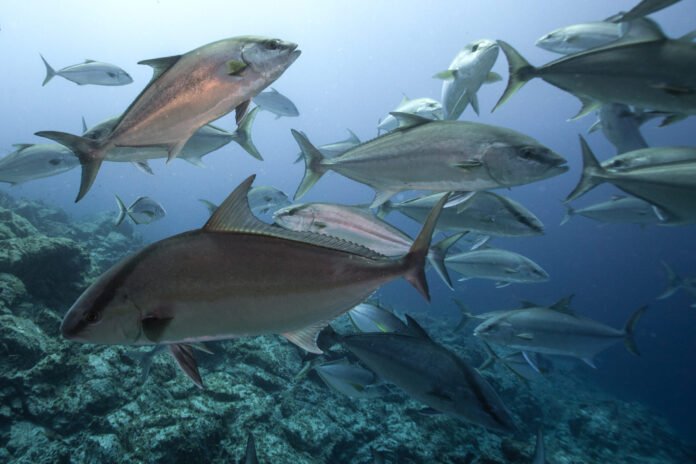Until now, inaccurate data, limited resources, and the sheer vastness of the ocean have made effectively monitoring MPAs for industrial fishing a challenge. This groundbreaking methodology offers a powerful new way to assess fishing compliance and bridge blind spots in current monitoring methods.
“It is now the responsibility of government and countries to enforce their laws,” says Sala. “They cannot argue anymore that ‘we don’t know that illegal fishing is taking place there’ because we are able to provide the evidence now to ensure that these illegal vessels can be prosecuted.”
In the same way that Sala was a part of the team that “lifted the veil’ on bottom trawling with footage captured from the seabed and shown to the world in the recent cinematic release, Ocean with David Attenborough, Sala is convinced that this too is leaving the ocean’s antagonists with “nowhere to hide.”
“With bottom trawling, we have had the evidence for a decade, when it comes to the environmental devastation and the harmful subsidies, now we know about the huge economic loss to society… yet nothing happened,” he continues. “But now that the people have seen it, now that the officials have seen it, governments are paying attention.
“I hope we will see the same effect with this. Now, this activity is detectable. And now it’s up to the concerned nations to make their marine protections enforceable.”
The reason this is important, of course, is found in the growing body of research which shows that MPAs produce spillover of fishes and invertebrates that increases the catches of species from small and sedentary (lobsters and scallops) to large and migratory, like tuna. In fact, a 2024 study revealed that fishing catch per unit effort increases, on average, 12% to 18% near the boundaries or large, fully protected MPAs.
“Illegal fishing takes place in areas of the ocean set aside for protection, but using satellites we have found – for the first time ever – that the level of protection determines how much risk industrial fishers are willing to take on,” Sala continues. “Fully and highly marine protected areas discourage illegal fishing. The stricter the rules in place to conserve ocean areas, the more benefits nations receive – including more fish to be caught outside protected areas’ boundaries.”
The study – Little to no industrial fishing occurs in fully and highly protected marine areas – is published this week in Science.






